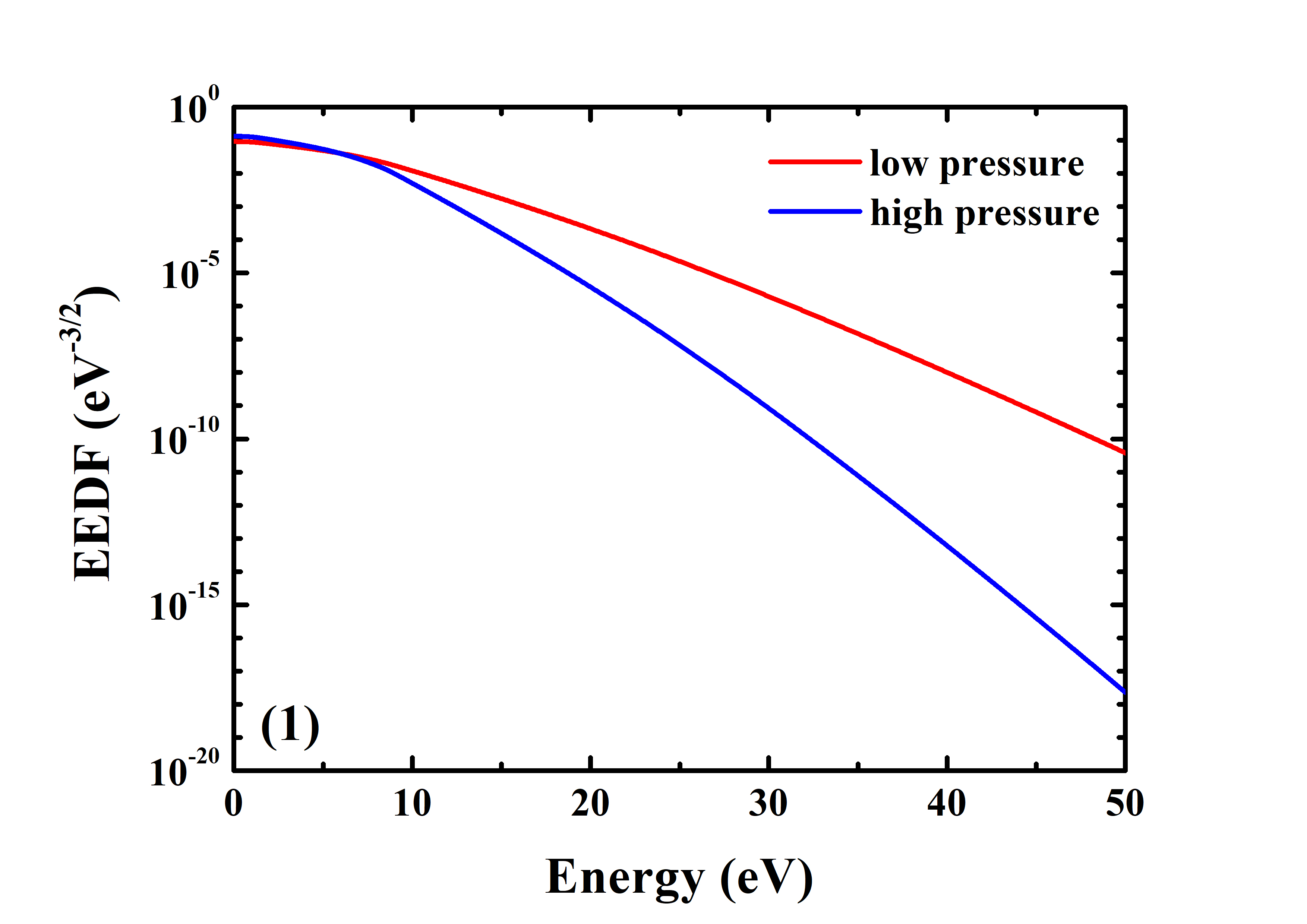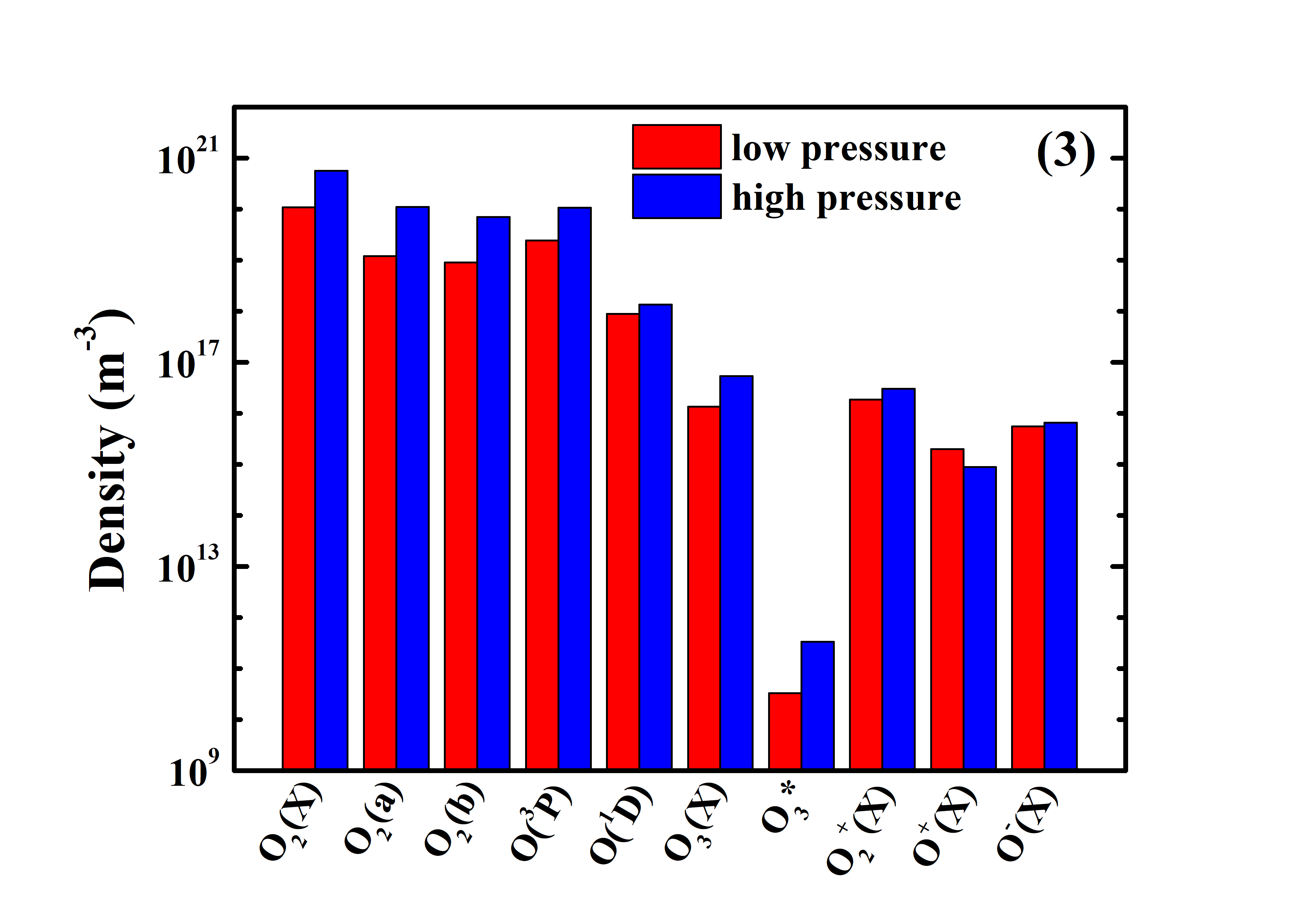The LisbOn KInetics - LoKI
Data
The LisbOn KInetics (LoKI) simulation tool requires quality data to deliver useful predictions on the behaviour of low-temperature plasmas. Thus, the development of tools is accompanied by the consolidation of state-of-the-art kinetic schemes for various gases and gaseous mixtures.
The procedure involves:
(i) the critical assessment of data (electron scattering cross sections and heavy-species rate coefficients);
(ii) the validation of kinetic schemes, by comparing simulation results with experimental measurements (mainly obtained by optical emission spectroscopy diagnostics) for the intensities of the most relevant radiative line/band transitions and/or the densities of the most relevant excited species in the plasma;
(iii) the public release of electron scattering cross sections for momentum-transfer, excitation to electronic / vibrational / rotational states, attachment and ionization, through the IST-Lisbon database on the open-access website LXCat;
(iv) the distribution / publication of the kinetic schemes and data as KInetic Testbeds (KITs).
The LoKI tools and data leverage on the scientific heritage in the field of non-equilibrium plasma kinetics of the Portuguese group N-Plasmas Reactive: Modelling and Engineering (N-PRiME), and they were developed / consolidated resorting to well-grounded scientific foundations established years ago.
The current efforts focus on argon, helium, nitrogen, oxygen (and mixtures), carbon dioxide (and mixtures), delivering kinetics schemes for these systems (see graphs below) that include cross sections for electron-impact with the following atoms/molecules:
- Ar (collisions with ground-state Ar(1S0));
- He (collisions with ground-state He(1S1));
- N2 (collisions with ground-state N2(X) and N2(X,v=0); swarm validated), N2-vib (with N2(X,v=1-10)), N2-rot (with N2(X,v=0,J=0-30) ΔJ=2). The latter two datagroups are clustered under Nitrogen;
- N (collisions with ground-state N(4S)), N-elec (with N(2D) and N(2P)). These datagroups are clustered under Nitrogen;
- O2 (collisions with ground-state O2(X) and O2(X,v=0); swarm validated), O2-vib (with O2(X,v=0-41)), O2-rot (with O2(X,v=0,J=1-29) ΔJ=2), O2-elec (with excited electronic states, namely O2(a1Δg, b1Σ+g)). The latter three datagroups are clustered under Oxygen;
- O (collisions with ground-state O(3P)), O-elec (with excited electronic states, namely O-). These datagroups are clustered under Oxygen;
- O3 (collisions with ground-state O3(X)), clustered under Oxygen;
- H2 (collisions with ground-state H2(X) and H2(X,v=0); swarm validated), H2-vib (with H2(X,v=1-15)), H2-rot (with H2(X,v=0,J=0-5) ΔJ=2), H2-elec (for the recombination of H2+ and H3+). The latter three datagroups are clustered under Hydrogen;
- H (collisions with ground-state H(1s)), H-elec (with H(2s), H(2p), H(3), H(4) and H(5)). These datagroups are clustered under Hydrogen;
- CO2 (collisions with ground-state CO2(X) and CO2(X,v=000); swarm validated);
- CO (collisions with ground-state CO(X) and CO(X,v=0); swarm validated), CO-rot (with CO(X,v=0,J=0-17) ΔJ=1);
- CO_anis (collisions with ground-state CO(X) and CO(X,v=0) to be adopted when anisotropic scattering for rotational collisions is also considered; swarm validated), CO_dipint-rot (dipole-integral cross sections for rotational excitation with CO(X,v=0,J=0-25) ΔJ=1), CO_dipmt-rot (dipole-momentum-transfer cross sections for rotational excitation with CO(X,v=0,J=0-25) ΔJ=1), CO_quadint-rot (quadrupole-integral cross sections for rotational excitation with CO(X,v=0,J=0-24) ΔJ=2). These datagroups are clustered under CO_anis.
For more information about the N2-O2 volume and surface kinetic scheme, see V. Guerra, A. Tejero-del-Caz, C. D. Pintassilgo and L. L. Alves, Modelling N2–O2 plasmas: volume and surface kinetics, Plasma Sources Science and Technology 28 073001 (2019), available here.

Argon KIT - results
The figures show example results, obtained for argon plasmas at low and moderate pressures, with the simulation tool LisbOn KInetics - LoKI: the electron energy distribution function (1); the distribution of the electron power-density (2); and the densities of charged and neutral species (3).



Helium KIT - results
The figures show example results, obtained for helium plasmas at low and moderate pressures, with the simulation tool LisbOn KInetics - LoKI: the electron energy distribution function (1); the distribution of the electron power-density (2); and the densities of charged and neutral species (3).
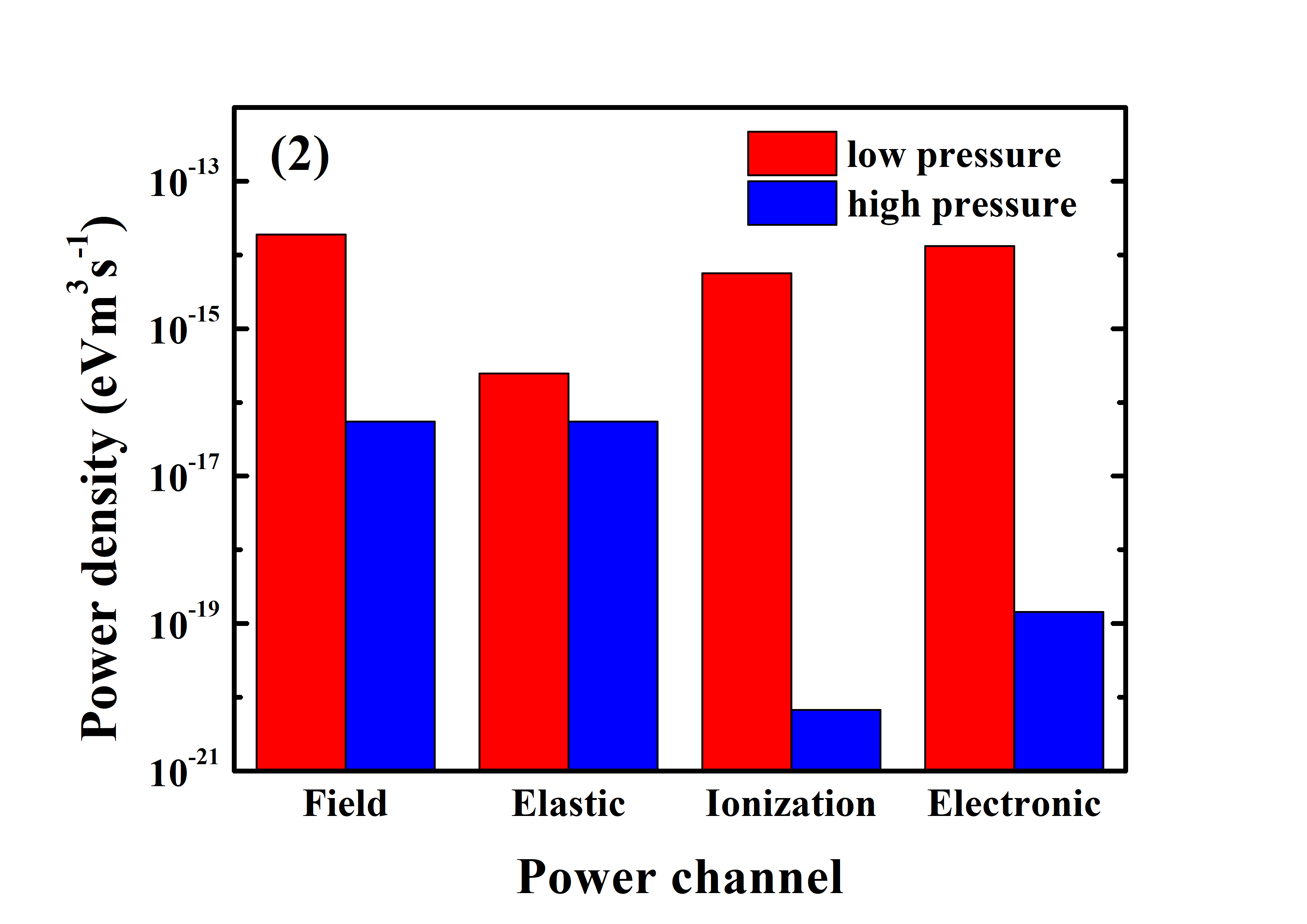
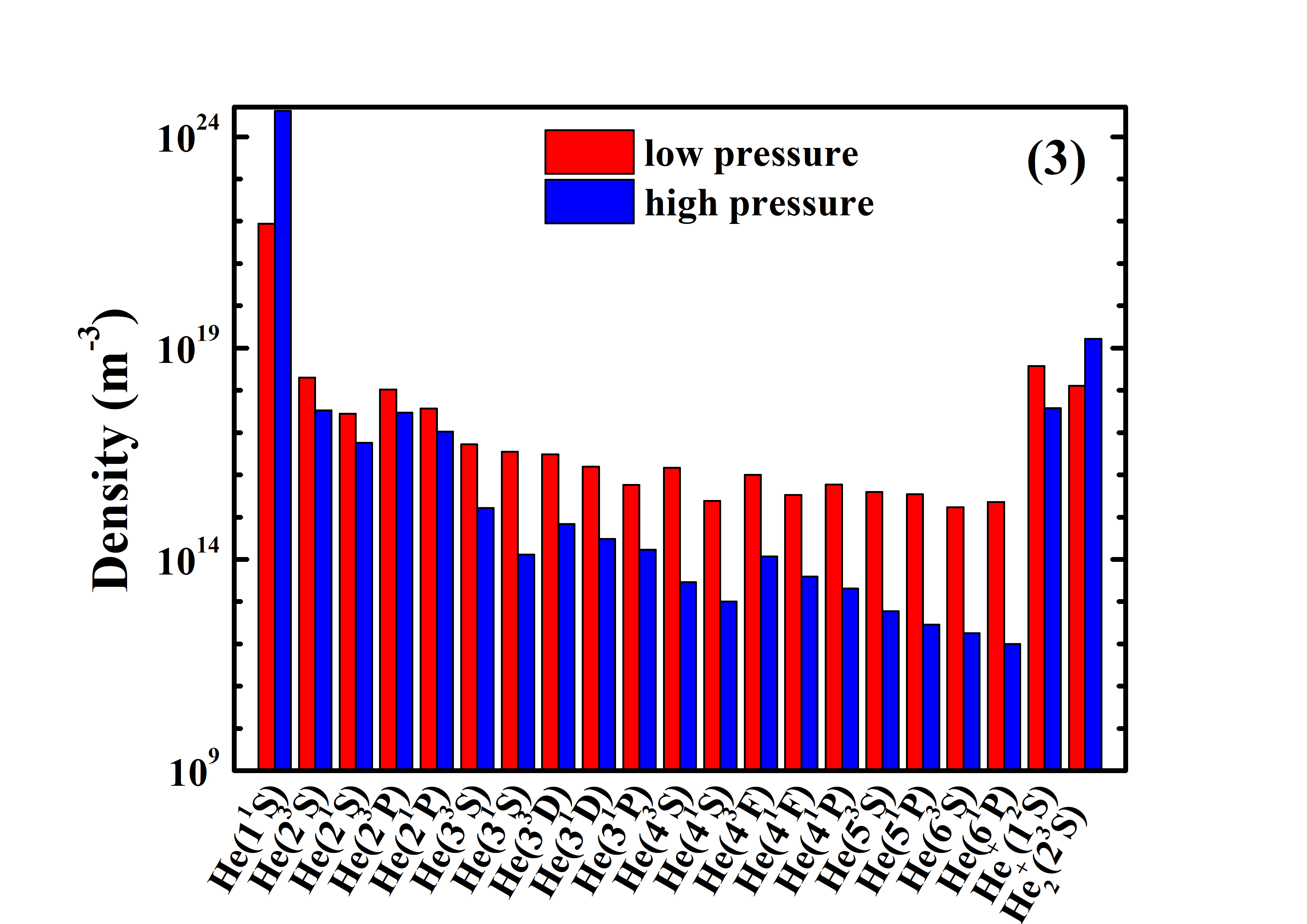
Nitrogen KIT - results
The figures show example results, obtained for nitrogen plasmas at low and high-pressures, with the simulation tool LisbOn KInetics - LoKI: the electron energy distribution function (1); the distribution of the electron power-density (2); the densities of atomic / molecular charged and neutral species (3); and the distribution of densities for the vibrational excited states with the electronic ground-state N2(X) (4).
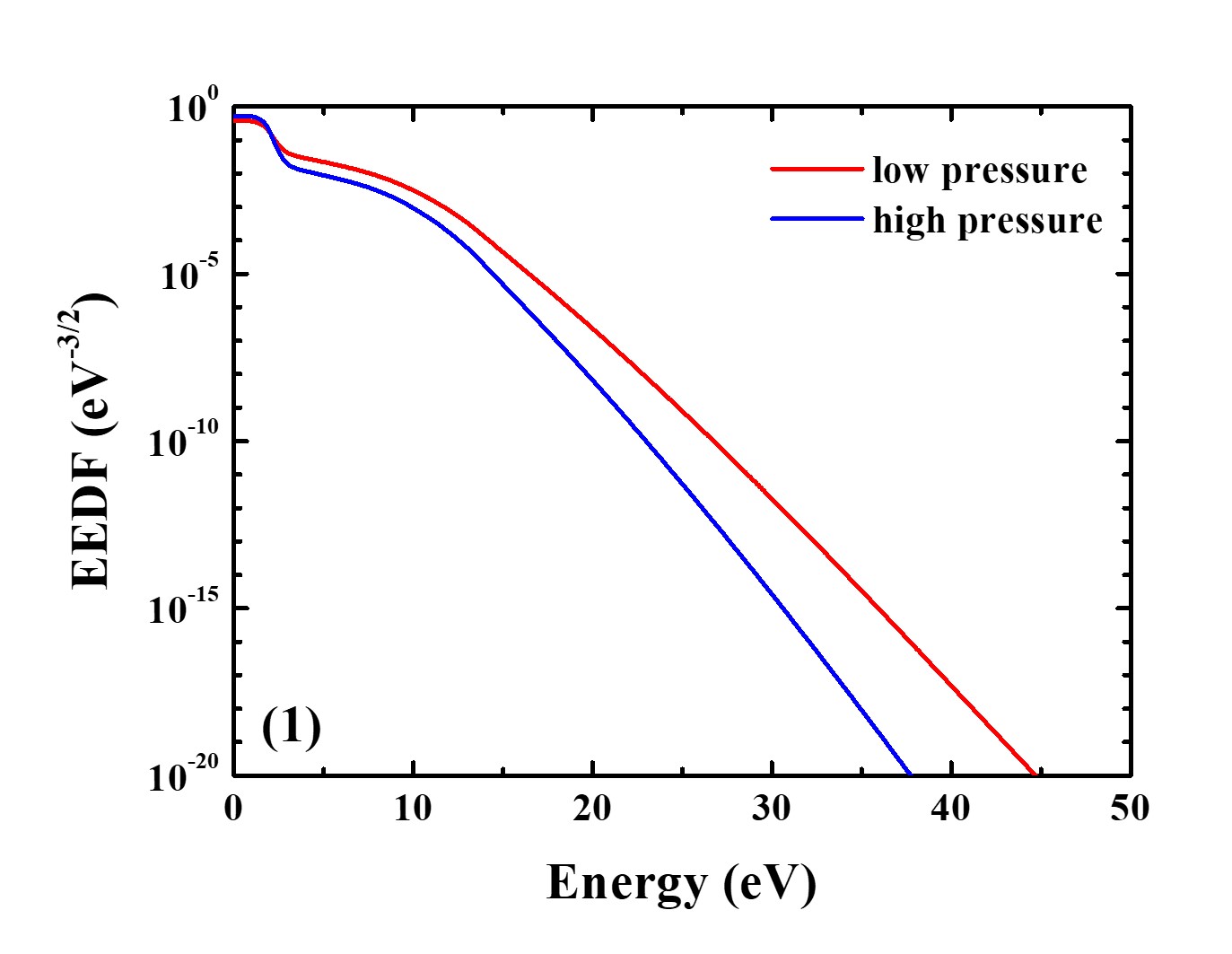
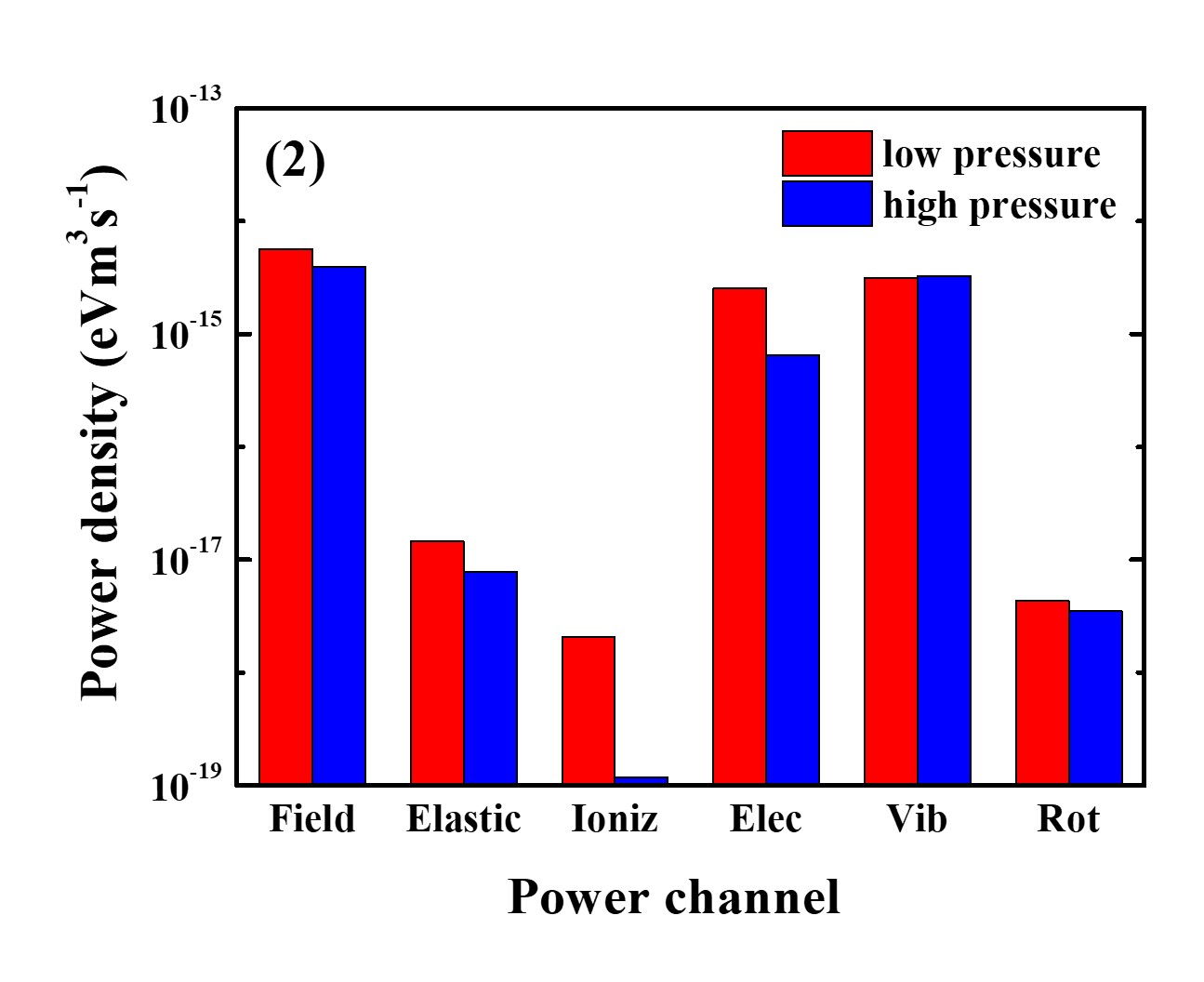


Oxygen KIT - results
The figures show example results, obtained for oxygen plasmas at low and moderate pressures, with the simulation tool LisbOn KInetics - LoKI: the electron energy distribution function (1); the distribution of the electron power-density (2); the densities of atomic / molecular charged and neutral species (3); and the distribution of densities for the vibrational excited states with the electronic ground-state O2(X) (4).
